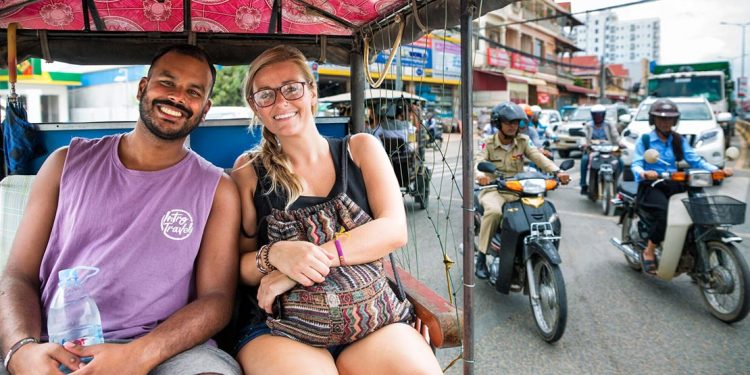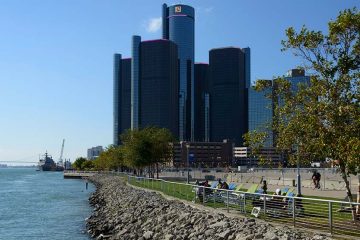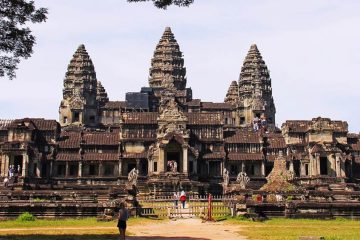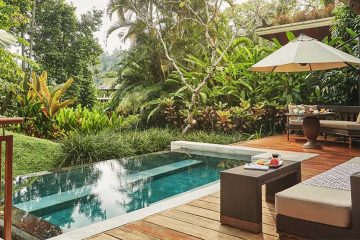5 Reasons Phnom Penh, Cambodia Deserves a Spot on Your Bucket List
Colorful Streets and Delicious Eats
I spent two years living in, and consequently falling in love with, Cambodia’s capital city of Phnom Penh. During my time there I had the chance to experience the city from both a tourist perspective and through the everyday life of a local expat.
Phnom Penh is often overlooked when it comes to Cambodia travel in favor of the country’s other large tourist draw, Siem Reap. Though I highly encourage a trip to the ancient wonders located there, I’m here to explain why Phnom Penh is equally deserving of a spot on your bucket list.
Whether you choose to sign up for a group trip that features Phnom Penh or decide to adventure on your own, below is a comprehensive list of reasons this city is worthy of your wanderlust.
Budget-Friendly
As a university student and a regular human being, I am ever-grateful for the affordability of Phnom Penh. By “budget-friendly” I don’t simply mean that you can get by for cheap if you’re willing to sacrifice comforts here and there — I mean you can exist in comfort and even in occasional luxury without breaking the bank.
Affordable accommodation ranges from $5 USD a night for high-rated hostels and guesthouses to under $100 USD a night for luxurious boutique hotels with pools and all the expected amenities.
There is no need to rent a car even for long-term visits to Phnom Penh. You can get almost anywhere in the city via a ride on one of the many tuk-tuks, an experience within itself. Once you’re aware of the general tuk-tuk pricing, don’t be afraid to bargain down to what you believe is fair.
Expect to be able to treat yourself to high-end experiences you may not be able to afford in other destinations, such as full body massages at blissful spas and frequent full-course dinners. Even a visit to the top tourist attractions such as the Royal Palace or the National Museum of Cambodia will only set you back about $10 USD.
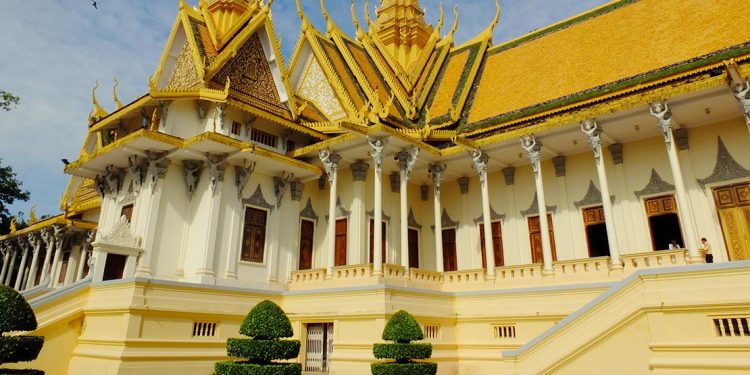
Stunning Architecture
Get prepared to be taken aback by the beauty and instagrammability of some of the structures around Phnom Penh. The aforementioned Royal Palace and National Museum of Cambodia are both just as culturally fascinating and informative as they are picturesque.
The grounds of the Royal Palace feature a floor made of solid silver tiles and an expansive mural that tells a tale from the Ramayana within its intricate golden peaks. At the National Museum of Cambodia you can learn about Cambodia’s cultural history through ancient Khmer artifacts inside a building that is a piece of history in and of itself.
The reddish-brown structure was modeled after traditional Khmer temples with its tiered roofs that have intricate carvings and nagas extending out to the sky. There is a charming open-air courtyard in the center of the museum with water lilies and koi fish that is also lovely to walk through.
Don’t forget to head to some of the Buddhist temples around the city as well. Wat Phnom is one of the most well-known temples and sits near the center of Phnom Penh. Wat Kean Kleang, which is just outside the city limits and is far less frequented by tourists, is striking with its detailed golden exterior and colorful mural-covered interior.
Although Detroit has had its struggles, the city has been revitalized and made itself into a top tourist spot. These are the best things to do in Detroit.
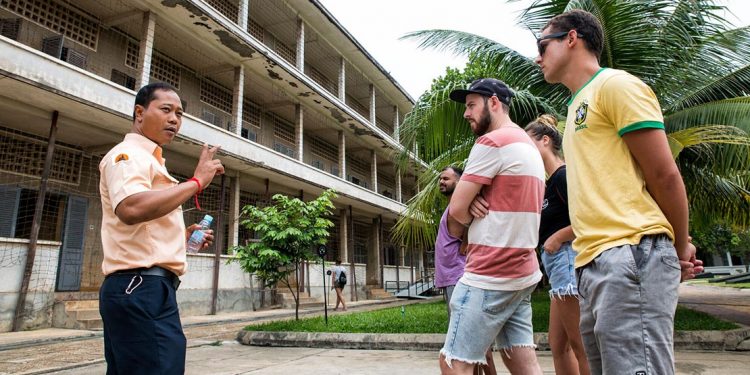
Important History
When many people think of Cambodia they think of the genocide that impacted the country not too long ago, commonly referred to as “The Khmer Rouge.” Though the war doesn’t define the country by any means, it has had a lasting impact on Cambodia and Cambodian people.
Memories from it are still fresh in the minds of many survivors, with the Khmer Rouge party only being kicked out of power in 1979. The Tuol Sleng Genocide Museum is one of the best places to learn about this powerful part of history.
Tuol Sleng, also known as S-21, was used as a torture prison during the war where more than 15,000 people are known to have been held. Now a museum, it is done remarkably well and offers guided and audio tours. Sometimes one of the few survivors of the prison stops by to recount their personal stories as well.
Though it can be difficult to stomach the atrocities of war, it is important to acknowledge and understand history. Choeung Ek Genocidal Center, the site of the infamous Killing Fields, is another place where you can learn about and remember the Khmer Rouge.

